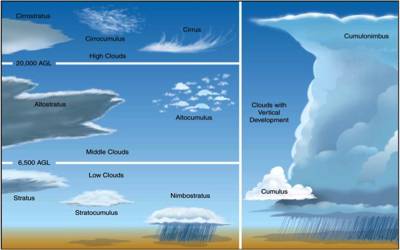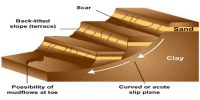Clouds in the Atmosphere
Cloud is a mass of minute water droplets or tiny crystals of ice formed by the condensation of the water vapor in free air at considerable elevations. As the clouds are formed at some height over the surface of the earth, they take various shapes. According to their height, expanse, density, and transparency or opaqueness clouds are grouped under four types: (1) cirrus; (ii) cumulus; (iii) stratus; (iv) nimbus.

Cirrus: Cirrus clouds are formed at high altitudes (8.000 – 12.000m). They are thin and detached clouds having a feathery appearance. They are always white in color.
Cumulus: Cumulus clouds look like cotton wool. They are generally formed at a height of 4.000 -7.000 m. They exist in patches and can be seen scattered here and there. They have a flat base.
Stratus: As their name implies, these are layered clouds coveting large portions of the sky. These clouds are generally formed either due to loss of heat or the mixing of air masses with different temperatures.
Nimbus: Nimbus clouds are black or dark gray. They form at middle levels or very near to the surface of the earth. These are extremely dense and opaque to the rays of the sun. Sometimes, the clouds are so low that they seem to touch the ground. Nimbus clouds are shapeless masses of thick vapor.














